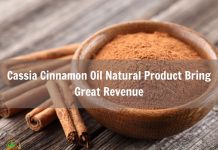For those interested in importing Vietnamese cinnamon bark as a potential business venture, this article provides comprehensive guidance and insights. Vietnamese cinnamon bark stands out as the most lucrative form of this cinnamon variety, and this article aims to shed light on its profitability.
Contents
1. Overview of Vietnamese cinnamon bark:
Vietnamese cinnamon is obtained from the bark of trees belonging to the Cinnamomum loureiroi species, which is native to Vietnam. The provinces of Yen Bai and Quang Nam in Vietnam are known for producing the highest quality cinnamon.
1.1. Distinctive characteristics of Vietnamese cinnamon bark
Vietnamese cinnamon possesses unique qualities in terms of appearance, taste, aroma, and fragrance that differentiate it from other cinnamon varieties:
- Appearance: The Vietnamese cinnamon bark is thick, dark brown, and has prominent ridges and a rough texture. The inner bark is thinner and more delicate, with a reddish-brown color.
- Taste: Vietnamese cinnamon has a sweet and spicy flavor with a warm and slightly bitter undertone. Its complexity and intensity surpass other types of cinnamon, leaving a lingering and balanced aftertaste.
- Aroma: The aroma of Vietnamese cinnamon is powerful and pungent, with a sweet and spicy fragrance reminiscent of clove and nutmeg. It emits a comforting and warm scent that can fill a room.
| Moisture | 13-14% |
| Oil content | 5% |
| Length | ranges from 8 to 15cm |
| Thickness | measures between 2 and 3.5mm |

1.2. Cultivation areas and production volume
According to the General Department of Forestry, Vietnam has approximately 170,000 hectares of cinnamon cultivation. The provinces with the largest cinnamon cultivation areas are Lao Cai, Yen Bai, and Quang Nam, which together account for about 70% of the country’s cinnamon cultivation.
The annual reserves of cinnamon bark in Vietnam are estimated to be between 900 thousand and 1.2 million tons, with an average annual production of 70 to 80 thousand tons. Recent data indicates a high demand for Vietnamese cinnamon, presenting a potentially profitable opportunity for wholesalers interested in purchasing the product.
1.3. Versatile usages of Vietnamese cinnamon bark
Benefits of Vietnamese cinnamon bark in cooking and medicine:
- Cooking usages: Vietnamese cinnamon adds a distinct and robust flavor to dishes, whether sweet or savory. Its pleasant aroma enhances the culinary experience, making it a versatile and aromatic spice.
- Medicine usages: Vietnamese cinnamon offers potential health benefits as it is rich in antioxidants, has anti-inflammatory effects, helps regulate blood sugar levels, aids in cholesterol management, promotes digestion, and possesses antimicrobial properties. However, it is important to consult a healthcare professional before using cinnamon for medicinal purposes.

2. Some famous Vietnamese cinnamon bark suppliers
Top 3 Cinnamon Bark Suppliers in Vietnam:
- Hanoi Cinnamon: With competitive wholesale prices ranging from 2200 to 4500 USD/ton, Hanoi Cinnamon is an experienced exporter of affordable Vietnamese cinnamon bark. They prioritize delivering high-quality products to global consumers, making them the best choice for distributors.
- Vina Samex: With over 20 years of industry experience, Vina Samex is a reputable supplier of Vietnamese cinnamon. They source their cinnamon from farmers in the Mekong Delta region and implement stringent quality control measures to ensure top-quality products.
- Nghi Son Foods Group: As a leading supplier of spices, including Vietnamese cinnamon bark, Nghi Son Foods Group has a strong presence in the international market. They have a dedicated team of professionals experienced in the spice industry, ensuring high-quality products that meet international standards.










